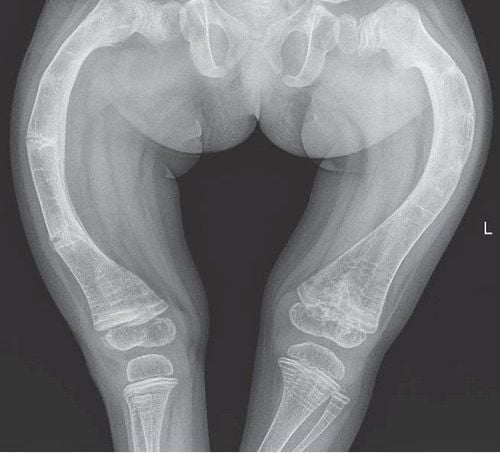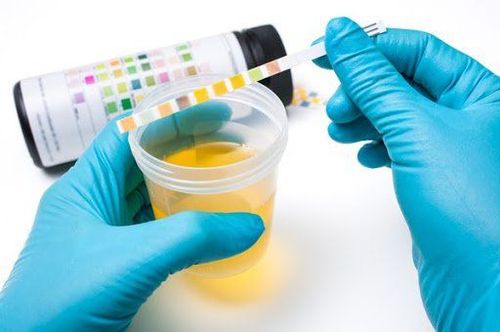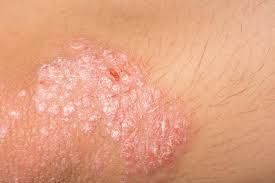This is an automatically translated article.
Connective tissue diseases are disorders that involve protein-rich tissue. Examples include adipose tissue, bone tissue, and cartilage tissue. These disorders often involve the joints, muscles, and skin. There are more than 200 different disorders that can potentially affect the connective tissues. Specific causes and symptoms vary according to the type of disorder.1. Genetic disorders of connective tissue factors
Certain connective tissue diseases - also known as hereditary disorders of connective tissue; This is the result of mutations in certain genes. There are some relatively rare variations. Here are some common variations.1.1 Ehlers-Danlos syndrome (EDS) It is in fact a group of more than 10 EDS disorders characterized by symptoms of over-flexible joints, skin tightness, and abnormal scar tissue growth. Symptoms in EDS syndrome can range from mild to disabling. Depending on the specific form of EDS, other symptoms may include:
Scoliosis Weak blood vessels Bleeding gums Lung, heart valve, or digestive problems. 1.2 Epidermolysis bullosa (EB) This is a syndrome in which people with EB have skin so fragile that it tears or blisters that is caused by just a small bump, tripping, or even friction from clothing.
Some forms of EB can involve the gastrointestinal tract, respiratory tract, or bladder. Caused by a defect in certain proteins in the skin, EB is a syndrome that is detectable at birth.
1.3 Marfan syndrome Marfan syndrome affects bones, ligaments, eyes, heart, and blood vessels. People with Marfan syndrome tend to be of outstanding height, with very long bones. Marfan syndrome is caused by mutations in the gene that regulates the structure of a protein called fibrillin-1.
1.4 Vitreous osteopathy is a condition of brittle bones, low muscle mass, and loose joints and ligaments. Symptoms include the following:
The white part of the eye is blue or gray Thin skin A curved spine Respiratory problems Hearing loss Fragile teeth.

Bệnh xương thủy tinh là một tình trạng xương giòn, khối lượng cơ bắp thấp, các khớp và dây chằng lỏng lẻo
2. Autoimmune disease
The body's defense system produces antibodies whose main goal is to attack the body's own tissues.2.1 Atopic Dermatitis Atopic dermatitis includes polymyositis and dermatomyositis. These are two related diseases that involve inflammation of the muscles (polymyositis) and the skin (dermatomyositis). Symptoms of both diseases can include:
Muscle weakness Fatigue Difficulty swallowing Shortness of breath Fever Weight loss. 2.2 Rheumatoid Arthritis Rheumatoid arthritis is a disease in which the immune system attacks the synovial membrane causing pain, stiffness, swelling, and warmth in the joints. In addition, it also causes inflammation throughout the body. Other symptoms may include:
Fatigue Anemia Fever Loss of appetite. Rheumatoid arthritis can lead to permanent joint damage and joint deformity.

Viêm khớp dạng thấp có thể dẫn đến tổn thương khớp vĩnh viễn và biến dạng khớp
3. Scleroderma
Scleroderma is a term for a group of disorders that lead to thickening of the skin, a feeling of tightness, the creation of scar tissue, and some organ damage. These disorders fall into two general categories: localized sclerosis and systemic sclerosis.Localized scleroderma is found in the skin and sometimes symptoms appear in the muscles below it. Systemic sclerosis also involves blood vessels and major organs.
4. Sjogren's syndrome
Sjogren's syndrome is a chronic disease in which the immune system attacks glands that supply moisture, such as those in the eyes and mouth. The severity of this syndrome can range from mild to irritating to debilitating.Although dry eyes and dry mouth are the main symptoms of Sjogren, many people also experience extreme fatigue and joint pain. The condition also increases the risk of lymphoma and can cause problems with the kidneys, lungs, blood vessels, and digestive system, as well as nerve problems.
5. Systemic lupus erythematosus
Systemic lupus erythematosus (or simply lupus) is a disease characterized by symptoms such as inflammation of the joints, skin, and internal organs. Symptoms may include:A butterfly-shaped rash on the cheeks and bridge of the nose Sensitivity to sunlight Mouth ulcers Hair loss Fluid around the heart and/or lungs Kidney problems Anemia or cells in the liver other blood cells. Problems with memory, concentration or other nervous system disorders.

Lupus ban đỏ hệ thống (hoặc đơn giản là lupus) là một bệnh có các triệu chứng đặc trưng như viêm khớp, da và các cơ quan nội tạng
6. Vasculitis
Vasculitis is a general term for more than 20 different conditions characterized by inflammation of the blood vessels. These conditions can affect blood flow to other organs and tissues.7. Mixed connective tissue disease
People with mixed connective tissue disease have symptoms that are characteristic of several diseases. These include: Lupus, scleroderma, polymyositis or dermatomyositis, and rheumatoid arthritis. In the case of patients with the above conditions, doctors often make the diagnosis of mixed connective tissue disease.While many people with mixed connective tissue disease have mild symptoms, others may experience life-threatening complications.
Any questions that need to be answered by a specialist doctor as well as if you have a need for examination and treatment at Vinmec International General Hospital, please book an appointment on the website to be served.
Reference sources: webmd.com, dieutri.vn
Please dial HOTLINE for more information or register for an appointment HERE. Download MyVinmec app to make appointments faster and to manage your bookings easily.
SEE MOREMixed connective tissue disease: Causes and symptoms Mixed connective tissue disease: Diagnosis and treatment What you need to know about autoimmune disease treatment













